The Last Week in January

The weather continues to be uncooperative. Last week it rained. This week, we’ve had unusually cold temperatures and high winds that sweep enormous clouds of dust across the site, usually just as we are ready to take a photograph (or so it seems). All we can do is keep our heads down and go on working. It has actually been a very productive week.
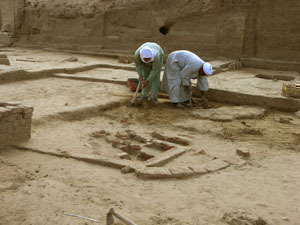
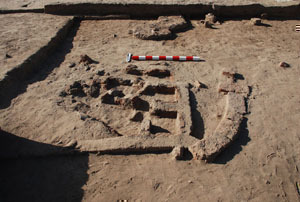
The area north of the Mut Temple’s First Pylon has been rather uninteresting so far this season. That changed this week when Qufti Mahmoud Abadi (on the right in the left photo) began to uncover an unusual feature (left). A curved line of baked brick lies west of a set of square brick chambers whose interiors have been heavily fired (right). We don’t yet know the full extent of this installation nor its purpose; we hope both will become clear over the next few weeks.
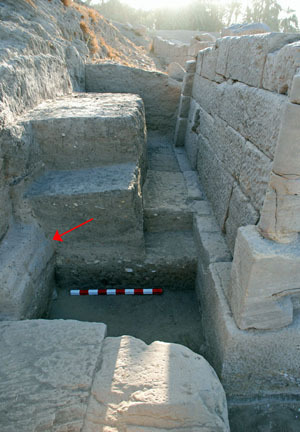
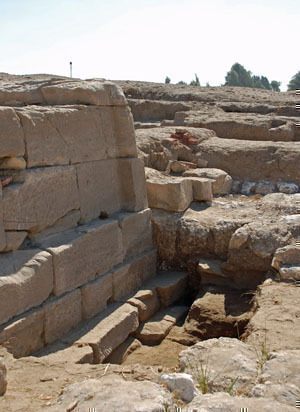
On the left you are looking east along the north end of Temple A’s 2nd Pylon just after dawn on Thursday. We have now uncovered the full length of the pylon to the top of the footing, and have dug a small sounding down to the bottom of the footing’s first course. The arrow points to the only trace of mud brick wall we have found, sitting on a layer of earth with traces of ash; the rest of what you see between the enclosure wall (left) and the pylon is bricky rubble.
At the south end of the pylon (right) we have discovered that the post-Ramesside limestone south wall of Temple A’s Forecourt (rear) was built up against and over the footing of the pylon. Intriguingly, there is stone projecting west from the pylon’s foundations. Do we have traces of an earlier side wall for the Forecourt?
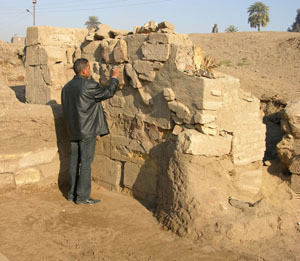
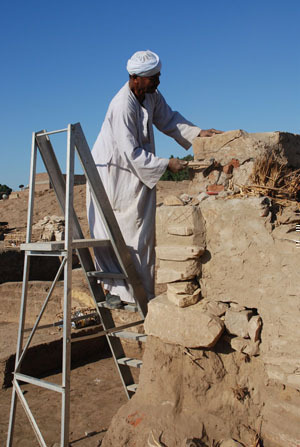
This week we dismantled the east end of the Taharqa Gate’s north wing. Not only was it somewhat unstable, but we can’t finish excavating the gate without removing the dirt (lower right) that was now this wing’s main support.
It was quite a job. After Khaled had consolidated the more fragile blocks (left), Mason Sayed Ahmed, balancing on a ladder, could begin freeing the upper blocks from the surrounding brick and mortar.
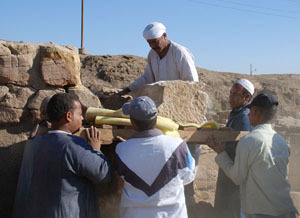
As each block came free it was loaded onto a litter and removed. Those blocks are heavy, but our workmen are up to the task.

The stone of this part of the gate was in even worse shape than we feared. As we removed the blocks, earth and sand cascaded down the face of the gate.
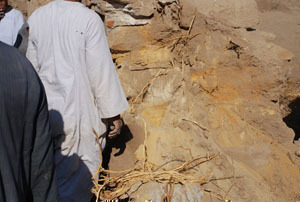
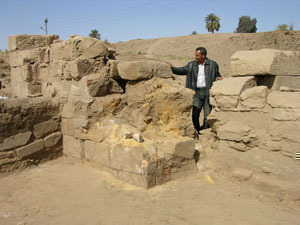
An amazing amount of halfa grass had grown through and around the stones of the gate (left), contributing to their decay. The bright yellow areas in the center and right of the photo are patches of sand that used to be stone. When all the rubble had been cleared (right) we were pleased to find that the lower blocks of the wing’s east end were in somewhat better condition than the upper ones. It is clear, however, that we won’t be able to complete the gate’s restoration this year.
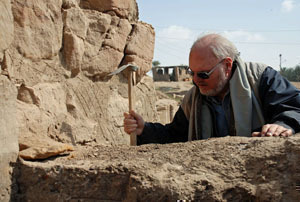
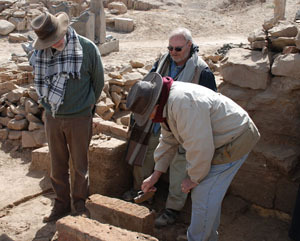
With the decayed stone removed, on Wednesday Richard was able to begin to work on a section of the mud brick wall blocking the Taharqa Gate (left) so that we can see what is buried behind it. Later the same day he, Jaap and Bill inspect an inscribed block that had been re-used in the construction of one of the rooms in the gateway. Everyone is bundled up because of the cold.
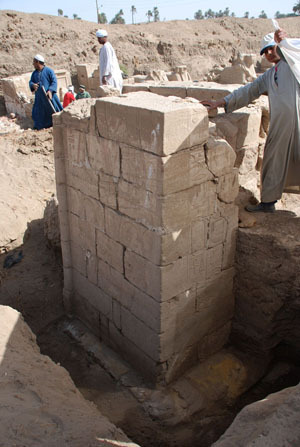
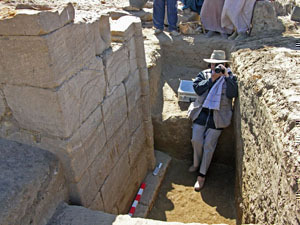
By week’s end we had uncovered the sandstone footings of west side of both the north (left) and south (right) wings of the Taharqa Gate, which are in better condition than the east sides. These photos give some idea of the depth to which the gate was buried. Getting down into such relatively deep holes to take pictures can sometimes be awkward.
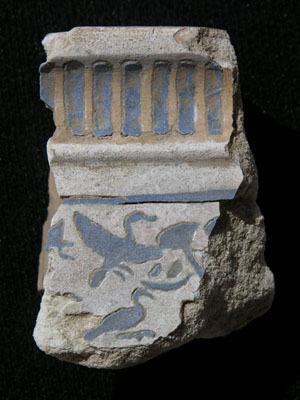
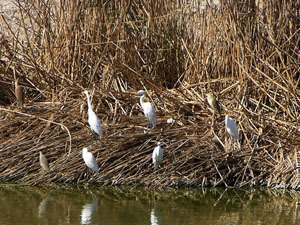
From the excavation at the west face of the 25th dynasty gate’s south wing came this lovely small fragment (less than 3” tall) of a late 18th Dynasty faience object showing part of a marsh scene with wild fowl (left). On the right, a group of snowy egrets and squacco herons (brown backs) perch along the marshy shore of our sacred lake, whose ancient name is isheru. To the ancient Egyptians, marshes teaming with birds and other wildlife could be symbols of birth and renewal while the isheru itself represented the site of creation and the waters from which life first rose.

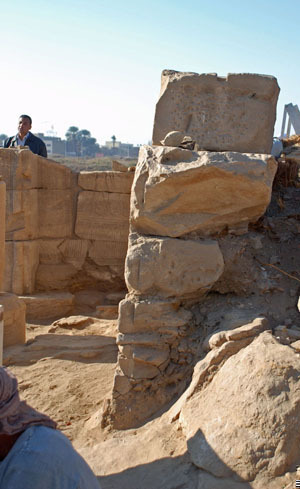
The reliefs on the west side of Chapel D’s first room are among the most complete in the precinct, but their blocks no longer are perfectly aligned (left). The chapel had already suffered some damage in antiquity: the baked brick at the bottom of the wall is a Roman Period repair. The wall is also no longer vertical (right), possibly the result of an ancient earthquake, and is supported mainly by the earth behind it. We have added the restoration of this part of Chapel D to our projects for the season.
After Khaled and his team had cleaned and numbered the wall’s blocks, we began taking it apart late Wednesday morning. The narrow confines of the chapel and surrounding structures meant we could not bring in the crane from Karnak that we have occasionally used in the past to move large blocks. Despite this, it took a little over an hour, using just rope, wood, rollers, and lots of manpower, to remove two blocks from the upper course. Here’s how the process works.
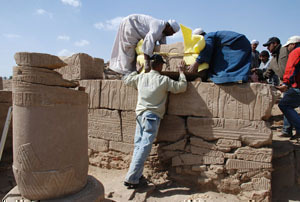
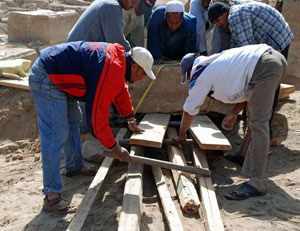
Its face protected by foam rubber (left), the block is tipped onto planks of wood lying on rollers. The block is moved by gently sliding the planks along the rollers, the rear rollers being shifted to the front as soon as they are free (right).
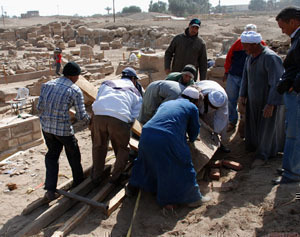
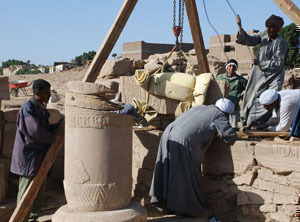
When the block reaches its destination, the planks are used to flip the block into its new temporary position (left). With a little space cleared, we were able to bring in a winch and tripod (siba) on Thursday to move the largest blocks (right).
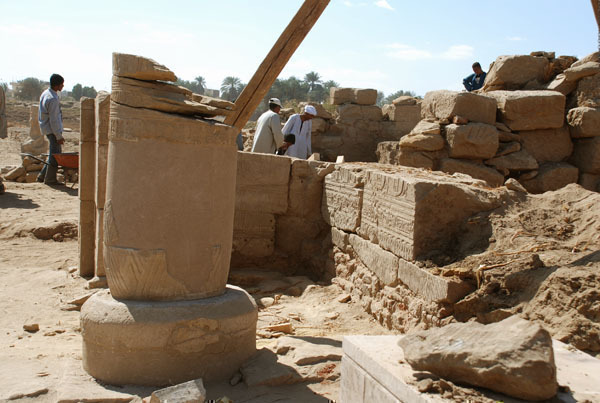
By the end of the day, only the lower two courses of the walls remain in place. Not bad for two days’ work.
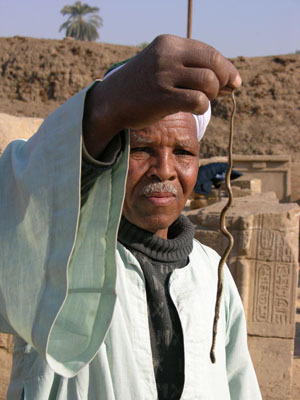
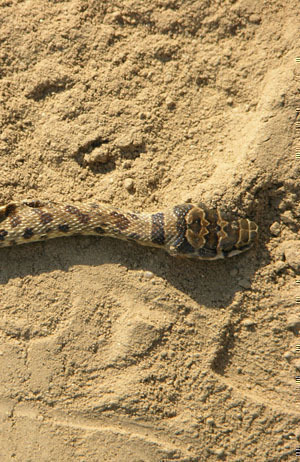
On the left Abdullah holds the first snake of the season, found (and promptly disposed of) on Monday. A close-up of the head is on the right. Life at Mut is never dull.
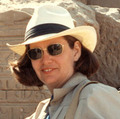
Mary McKercher holds a BA in Ancient Near Eastern Studies (specializing in Egypt) from the University of Toronto and is also a trained archaeologist. In 1979 she joined the Brooklyn Museum’s expedition to the Precinct of the Goddess Mut at South Karnak as photographer and archaeologist, roles she continues to fill. She has contributed to the Mut Expedition’s “Dig Diary” since it began in 2005, and put together the photographs for the 8 Mut Expedition photo sets on the museum’s Flickr site. With her husband, Richard Fazzini, she has also researched and written about the West’s ongoing fascination with ancient Egypt, commonly known as Egyptomania.
